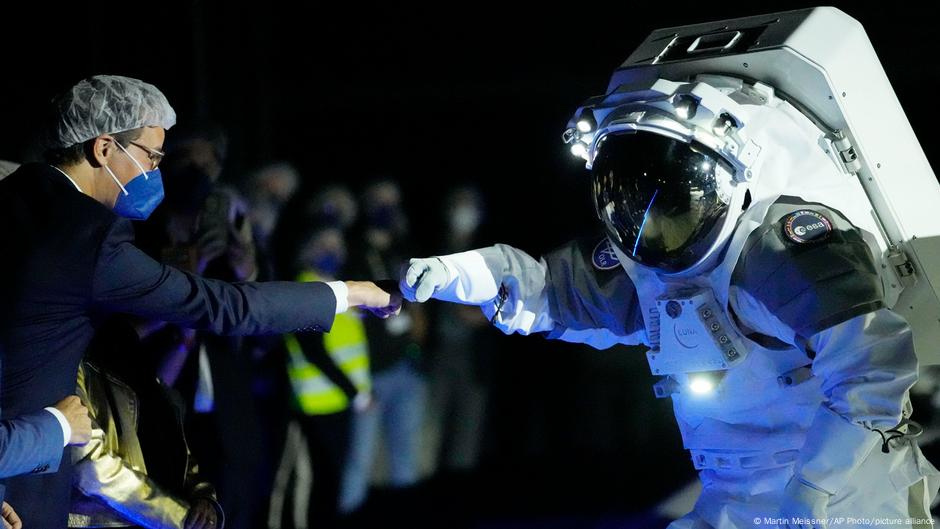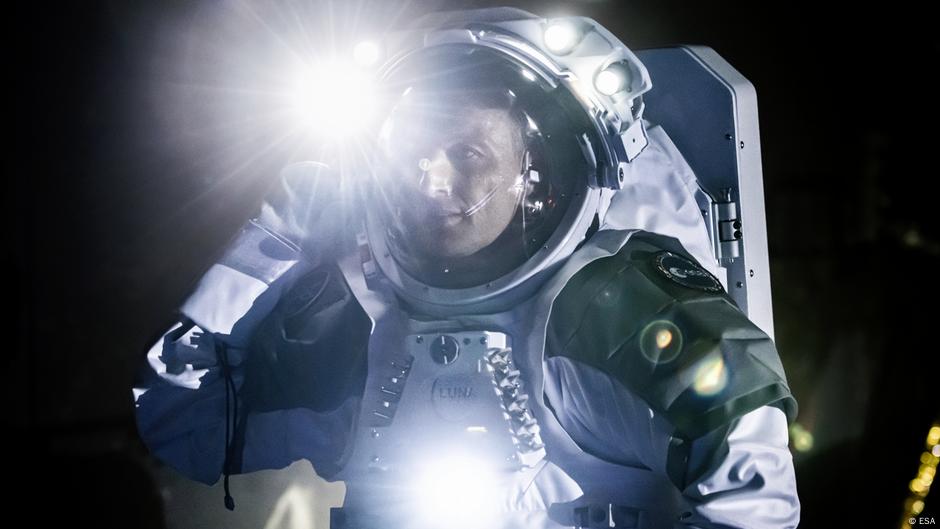How Europe Is Crafting a Piece of the Moon Right Here on Earth
Reaching the moon involves numerous incremental advancements, similar to what Europe’s newest LUNA training center represents. However, we haven’t reached our destination just yet. The next milestone will be developing a moon gravity simulation system.

If you wanted to replicate the Moon here on Earth, you'd require these three key components:
a sandy material with a chemical composition like regolith (lunar soil) special lighting to mimic the angle of the sun a moon gravity simulator (the moon's gravity is one-sixth of the Earth's gravity)And a gigantic container to enclose everything, similar to a large metallic shed.
When the German Aerospace Center (DLR) and the European Space Agency (ESA) presented their interpretation of the Moon — the LUNA Analog Facility In late September 2024, they had progressed two-thirds of the way toward depicting the moon's enigmatic terrain. However, one key component was still absent.
Darkness enveloped everything until a spotlight illuminated two completely suited astronauts — Germany’s Matthias Maurer and France’s Thomas Pesquet.
Maurer and Pesquet traversed the hangar, which spanned 700 square meters (7,500 square feet) of simulated regolith. This material was derived from the volcanic soil of Italy’s Mount Etna, the Eifel region in Germany, as well as stones from Norway.
Armed with long-handled scoops, a sample trolley, and accompanied by a robotic dog, the duo simulated an exploration of the mock lunar terrain before roughly 100 officials.
As they strolled along, the light beamed at a specific angle to mimic how the sun might block an astronaut’s view when humanity returns to the moon, potentially as soon as this decade.
However, they walked — not bounced as seen in video clips from The 1969 lunar landing missionApollo 11 — Because LUNA lacks lunar gravity.
Gravity simulation: The missing component of the LUNA mystery
Accompanied by a cinematic score, Maurer and Pesquet showcased how they would gather specimens and investigate a lunar crater on the actual moon. This display was quite impressive for the gathered politicians and space agency representatives, who enthusiastically congratulated the astronauts with fist bumps for the benefit of the television cameras and their production teams.
However, it seemed very terrestrial due to the lack of lunar-gravity-like conditions. This is an issue that the engineers haven't managed to resolve yet.

Previously, astronauts have utilized parabolic flights and swimming pools to mimic and feel the conditions of zero or microgravity.
Parabolic flights utilize modified jet planes to simulate weightlessness by climbing to and diving from high elevations at an angle of 45 degrees.
Swimming pools used for astronaut training are specifically designed, with the astronauts practicing simulated activities in their space suits.
However, none of these solutions would be feasible for the LUNA Analog Facility since it is located on solid ground.
Rather than doing so directly, engineers aim to create a "gravity compensation system," explained Andrea Emanuele Maria Casini, an aerospace engineer overseeing the LUNA project.
"As if you were suspending the astronauts like marionettes," Casini explained.
Wires will be connected to the outside of the astronauts' space suits, potentially tugging against them when they walk and holding them up as they leap.
The project remains in the prototyping stage. Until it becomes available, Casini concurred: LUNA is an extremely costly sandbox. However, at some point, they will aim to test new technologies and train astronauts within a sealed setting.
As Casini stated, 'The magic occurs internally,' adding that 'the landscape will assist the upcoming cohort of astronauts in returning to the moon.'
Moreover, there’s potential for growth. Adjacent to the LUNA Analog Facility, there are two extra components: a habitat simulator and a converted greenhouse from the EDEN ISS project. This initiative aimed at simulating food production in frigid extraterrestrial conditions.
Next to the main hall, there's an empty space that could potentially serve as a site for a future "LUNA 2" project or a Martian training area.
The moon was brought down to Earth
The LUNA Analog Facility has undergone development for 12 years. Maurer, who has logged 177 days in orbit, He has been driving this idea since day one. He mentioned that the facility accurately depicted the conditions on the moon, even without utilizing the gravity offloading system.
When I descend into the crater within the facility and am completely exposed to the sun’s rays, it blinds me," Maurer stated. Additionally, since he is inside the crater, all objects ahead appear shrouded in darkness due to the shadow cast by the rim.
This is a stress test designed for astronauts, subjecting them to challenging and occasionally conflicting circumstances similar to those they'll face on the moon.
A significant challenge is posed by the Moon's regolith. As stated by Maurer, "This represents a considerable technological hurdle. It wreaks havoc with all electronic devices, infiltrates mechanical components causing blockages, and even penetrates spacesuits. Such issues we have the ability to simulate and study right here on Earth."

Links around the globe
LUNA has the capability to connect with various mission control centers around the globe, including those such as DLR in Cologne and the German Space Operations Center (GSOC) located in Munich, along with NASA’s facilities in Houston, USA, and even the International Space Station.
This indicates that simulations might be conducted from afar, allowing NASA astronauts, for instance, to go through a mission rehearsal in Germany, all while being directed by their team based in the United States.
Once operational, the LUNA Analog Facility will serve as a symbol of Europe’s dedication to space exploration, according to Kai-Uwe Schrogl, who serves as an advisor for political matters at ESA.
[LUNA] lends credibility," Schrogl stated. "While many speak of venturing to the moon and further into space, having merely a handful of rockets or a lunar lander at the conceptual stage isn’t enough. It’s essential to possess such facilities to demonstrate your seriousness.
In addition to supporting NASA’s Artemis mission, Europe aims to reach the Moon by the 2030s with its independent efforts. Establishing the LUNA Analog Facility represents just one of several smaller initiatives aimed at making this vision a reality.
Edited by: Zulfikar Abbany
Author: Matthew Ward Agius

Post a Comment for "How Europe Is Crafting a Piece of the Moon Right Here on Earth"